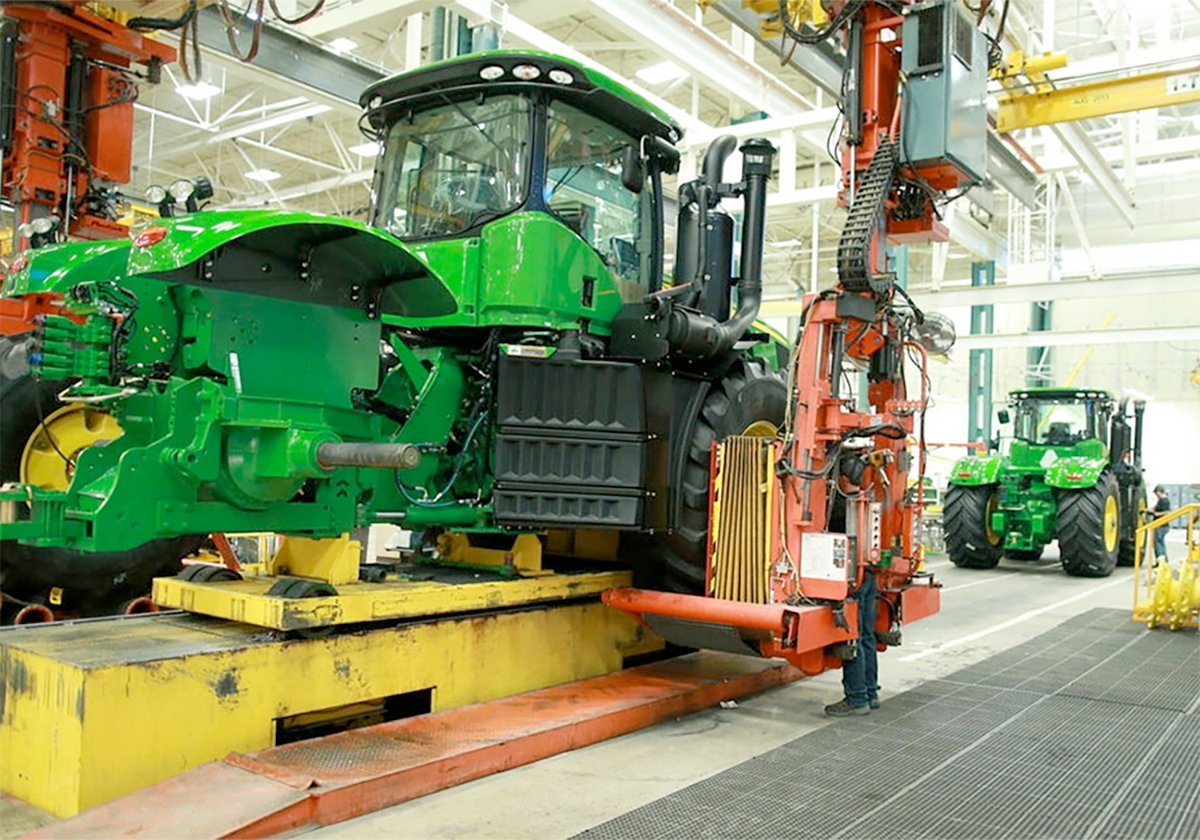Cancerous eyes are a regular occurrence in most western Canadian beef herds.
Early detection and treatment alleviate the pain and suffering that occurs in advanced cases.
The producer will also receive greater financial benefits with early intervention.
As is the case with pinkeye, cattle with white pigment around the eyes are more susceptible to the disease. Ultraviolet light, flies and other irritants may accelerate development of lesions.
There is thought to be a genetic susceptibility but this is not proven. Most producers should try to select for dark pigment around both eyes. Herefords are even being developed with this pigment.
Read Also

Trump’s trade policies take their toll on Canadian producers
U.S. trade policy as dictated by president Donald Trump is hurting Canadian farmers in a multitude of ways.
Cancer eye, or squamous cell carcinoma, usually starts as a plaque that can progress to a wart-like growth called a papilloma. It eventually progresses to an invasive tissue-destroying mass.
The goal is to recognize these signs early, while surgery can be successful. In cattle, about half the precancerous plaques regress spontaneously. If you observe these on a cow, note its number and keep an eye on it.
These plaques may remain for several years before advancing. Cancer eyes cause about 80 percent of entire carcass condemnations.
Cancerous eyes is an economic disease. If left until the orbit is eaten away, infection sets in and tremendous pain results. In these situations, the SPCA can be called in and charges can be laid.
In the past at slaughter, if spread was evident (metastasis to the local lymph nodes), condemnation was the result. Metastasis occurs in about 10 percent of cases. It is considered a locally invasive tumour.
Regulations are more stringent now and if some of the bony orbit is eaten out or infection is present, the animal will be condemned. The way to avoid this is early intervention by a veterinarian.
There are several procedures, depending on severity and the veterinarian’s expertise.
A high percentage of cancers start on the third eyelid, a white membrane that covers the eye. This can be frozen and surgically removed without losing the eye.
Fall pregnancy checking is an ideal opportunity to watch for eye problems as the cattle walk through the handling system. If problems are noted, they may be dealt with immediately.
If tumours are on the eyelids and not too advanced, a veterinarian may perform cryosurgery using liquid nitrogen. Heat therapy or an advanced surgery called a tarsoraphy are other options.
These methods have a higher chance of cancer reoccurrence but the eye is saved.
When doing these procedures, have a veterinarian check the other eye closely for precursors to cancer.
In more advanced cases, especially if the cancer is on the eyeball itself, surgical removal of the eye and lids is the only option. The veterinarian will usually need to consider several points.
At our clinic, if a cow is in late pregnancy, more than seven months, we generally wait until just after calving.
Likewise, in early pregnancy we may wait, especially if the client wants to keep the cow long term.
Producers should always consider the economic viability of the fetus when making decisions about surgery. Generally, the veterinarian has an idea about the prognosis for reoccurrence.
If the prognosis is excellent, the cow can be kept for several more years.
If guarded, it can be kept till weaning. Some cancer eyes, especially in large bulls or cows, are removed to insure they pass slaughter. Each case has its own specifics that must be addressed.
I always suggest quiet cows will remain that way even with one eye. Wild cows just get worse and should be culled. Wild cows that are blind on one side are
dangerous.
Bulls must have binocular vision to identify cows in heat, so they should be culled once the eye is removed and healed.
A fly tag or pour-on fly control is a wise idea until the surgery heals.
Early recognition is key. Our practice has become more successful at curing cancer eye as producers bring cases in early, before it spreads too far.
Often a few weeks can make a big difference in success rate. It is important not to confuse cancer eye with pinkeye. Small tumours can cause irritation to the eye that mimic pinkeye. Check closely.
In the early stages, cancer eye is not painful and no eye spasms occur.
A Cattle Facs sheet is available at most auction markets and veterinary clinics with pictures of eye conditions.
The cost of eye procedures varies but they are substantially less than the value of a cow or bull. To avoid slaughter condemnations or to extend the life of a productive cow, attend to eye problems immediately.














